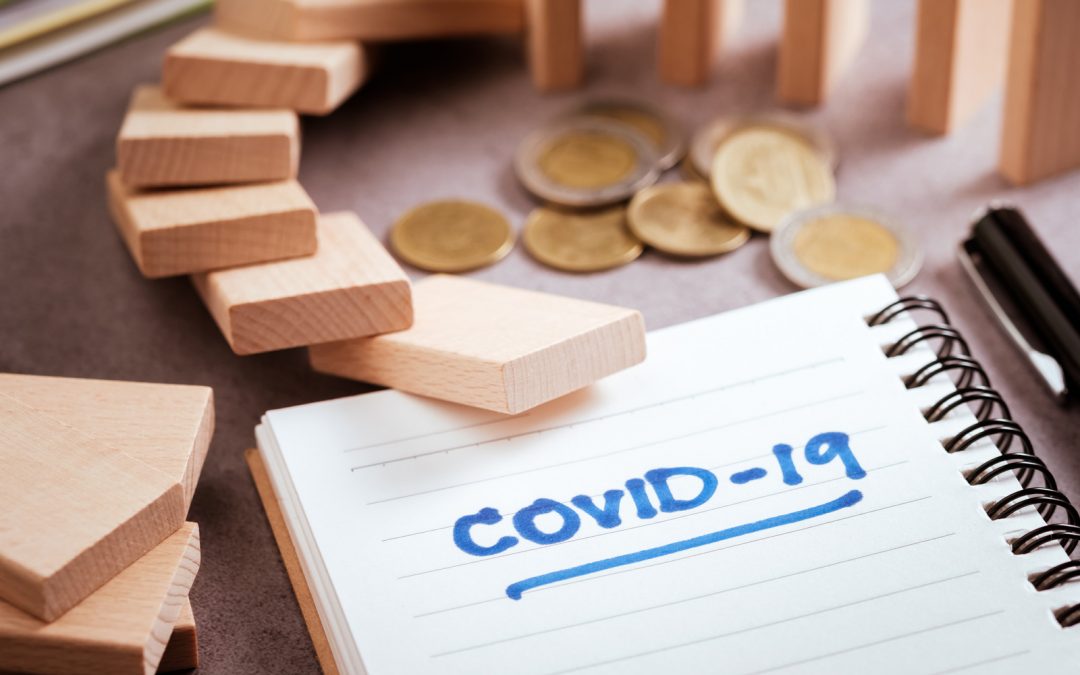The last 12 months have changed the way we work, the way our kids go to school and the way we buy things. It’s true for all of us. And if you sell something, the pandemic has changed that too. Generally, ad spend trends follow the rise and fall of the GDP. As the global GDP has risen in the last decade, so has ad market growth. In 2019 the ad market was estimated to be around $646 billion. But the coronavirus has put a significant pause on that growth.
COVID-19 = More Impact Than the 2008 Financial Crisis
While the dust is still settling on how massive this slump is, around 74% of media buyers, planners and brands have reported that COVID-19 has had a bigger impact than the 2008 financial crisis. Advertisers and marketers have had to implement new strategies to navigate these troubled waters. At Your Business Marketers, advertising is what we do. We have helped our clients adapt in major ways over the past months, and the outlook for sales is just fine, even optimistic. Not every business has this kind of help. Read on to get some detail on the key resets we’ve helped businesses through, and how yours can get back on track with tactics that recover (and improve) YOY revenue.
Metrics and Analytics Have Become Even More Important
Proof of performance has always been necessary for modern advertising. Basically, does it work? If a marketer says it does, you make them prove it with real statistics that represent real customer transactions. The importance of this “proof is in the pudding” measurement has skyrocketed in the last year. That’s because dollars count more than ever. COVID-19 didn’t just dry up the ad budget, it meant an overhaul of business as usual. Consumer’s eyes were suddenly in different places (largely online), and companies that relied on direct mail and even cable TV ads got schooled real quick. Everyone, even major players, had to take a hard look at what ads and strategies were actually driving value. Stats were the proof-positive (or negative) that results were real. The good news is that this shift to digital also means that platforms come with ready-made reporting and real-time analytics. More than ever, marketing departments on up could see at a glance: is this ad making us money? Giant ad agencies that only track meta KPIs may be fresh out of luck, but agencies like ours (that keep an eye on everything) have lots of great information to learn from. The change is more data-reliance. The negative is uncovering major flaws in a strategy. The positive is that strategy can change and be based on better knowledge. Overall, a net positive.
New Buyer Behaviors: eComm and Online Purchasing Trends
Data has provided a clearer picture of how buyer behavior changed during 2020. During the first few months after the WHO declared a global pandemic, we saw some significant shifts in consumer trends. Almost overnight, people changed what they’re buying, how they are making purchases and when they are shopping. Here are some areas of change:
- Online shopping—52% of buyers say that they shifted more to online shopping last year. Additionally, 81% of buyers say they plan on shopping online even after brick and mortar shops/service businesses start to re-open.
- Local first—COVID-19 hit small businesses the hardest. In response, consumers flocked to their favorite local businesses to show support. 57% of buyers have said they have made efforts to seek out local and independently owned businesses.
- Rising popularity in virtual experiences—With hair salons, yoga studios and other service-based businesses shuttered, virtual experiences have jumped onto the scene. Around 14% of buyers have said they have sought out a virtual experience for something they enjoy doing in person.
That last point doesn’t just apply to luxury brands. For instance, car dealerships and realtors got smart fast, offering virtual tours/VR experiences to incentivize the spend.
Local Businesses Have Grown Up & Gotten Digital
If there was any doubt about whether a local business needs a website or FB page, those are pretty much gone. In the face of lockdowns shuttering storefronts, businesses needed to start transacting online to stay afloat. We’re sure you’ve seen it, too: the coffee shop with a busy social feed or the furniture store that’s retargeting you with ads like crazy. While eComm behemoths like Amazon have historically flourished in the online market, local businesses are getting in the ring. If you can ship it, you can sell it online. And, even if you can’t ship it, someone can buy it online and pick it up curbside. The good news is that it’s more possible than ever to sell online. Local brands have learned to leverage low-cost entry points like Shopify or Squarespace to get a piece of the growing eCommerce industry.
The Latest Greatest: New Ad Trends
Businesses new and old learned how to navigate the online space in 2020. Strategies that help cut through the clutter of online advertising have become essential to sustained success. Additionally, changing trends have made it possible to advertise effectively even if you don’t have a massive marketing budget. Here are some strategies you can use:
- SEO—The global halt in advertising spending has created a massive opportunity for SEO. Businesses can leverage this change by driving traffic through organic search growth with optimized content and webpages.
- Geofencing—Geofencing draws on location-based technology to create custom virtual fencing zones for devices. This has allowed for laser-focused advertising that has been a savior for local and independent businesses pivoting to online sales.
- Ad retargeting—This strategy allows you to target individuals who have already engaged with your business. This could mean targeting based on social media profiles or website visits.
- Automated ad buying—This type of ad buying automates the buying process based on data analytics and algorithmic thinking. It targets spaces where ads are more likely to covert.
Learn more about programmatic ad buying.
- Email—Businesses can easily leverage their contact list by engaging in thoughtful, interesting and helpful email marketing. Open rates and click rates have only increased in 2020. Creating a weekly newsletter or even a more complicated drip campaign is an excellent opportunity to keep your customers engaged with your business.
Feel like you’re drinking from a firehose? We get it. We know this stuff. If you don’t, or if you just don’t have time, we can help.
How Your Business Marketer Can Help
First off, we are not the big guys. In fact, many of our clients are local Ohioans or people who are fed up with giant agencies that don’t care. Every company in the U.S. faces the same challenges to compete in a changing market. Our team at Your Business Marketer is here to help. To get a free online analysis of your business’s marketing needs, contact us today.

